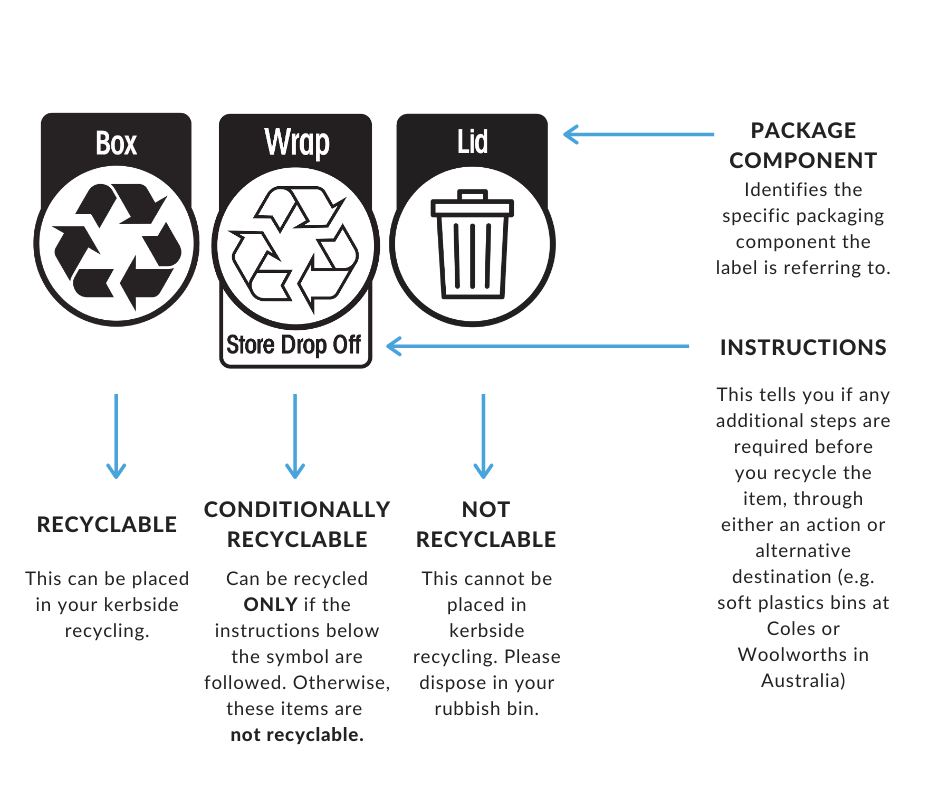A close look at the differences between types of plastic, and what you should look out for.
There are 7 types of plastic materials; PETE or PET, HDPE, V or PVC, LDPE, PP, PS and Other / Miscellaneous Plastics. Don't let the little arrows confuse you - these don't mean Recyclable (necessarily) - it just indicates the type of plastic.
 Image Source: https://3devo.com/blog/recycling-plastics/
Image Source: https://3devo.com/blog/recycling-plastics/
PETE or PET – Polyethylene Terephthalate
PET is the most common plastic material used in beverage bottles and cleaning product bottles. This material is suitable for recycling into filament, however, it absorbs odors and flavors from foods and liquids stored in it, which can prevent you from being able to recycle PET into filament. Make sure you wash these ones well before placing in curbside recycling.
HDPE – High Density Polyethylene
Another common plastic material is HDPE, comparative to PET it is known for having a low risk of leaching into foods and or liquids. This material is mostly used in the making of toys, yogurt cups, milk jugs, shampoo bottles and other similar products. Recycled HDPE is mostly turned into pens, plastic lumber, plastic fencing, picnic tables, and bottles. This material is suitable for recycling into filament, however, it is not easy to turn into filament; it flows easily but requires special cooling.
V or PVC – Polyvinyl Chloride
PVC plastics contain very harmful chemicals that have been linked to various diseases. This material is usually used for the making of plumbing pipes, tiles, windows and medical equipment. PVC only gets recycled by special programs within industries that recycle it into flooring, paneling and roadside gutters.
LDPE – Low-Density Polyethylene
This material is a very safe and clean plastic. It is recognized by its flexible and thin texture. It is commonly found in household items like grocery bags and, plastic wraps - often referred to as soft plastic. If you can crunch it in one hand - you can recycle it by taking it to any of 1,800 REDcycle bins across Australia, located in most metro and large regional supermarkets. Recycled LDPE is then usually found back in garbage cans, paneling, furniture, flooring and signage.
PP – Polypropylene
Another known safe plastic is PP. This material has a sturdy texture and it commonly found back in tupperware, syrup bottles, medicine bottles and yogurt containers. It is also heat resistant as it is also used in making microwavable food containers. PP is suitable for recycling into filament and being reused, and it is usually recycled into heavy-duty items like pallets, ice scrapers, rakes and battery cables.
PS – Polystyrene
We don't see much polystyrene in Australia these days - sometimes in beverage cups, plastic utensils, insulation, packing materials, egg cartons, and disposable dinnerware. Ploystyrene is prone to leaching so not a great one to be recycled and best avoided where possible.
Other / Miscellaneous Plastics
SPI 7 is seen as all kinds of plastic that does not fall in the 1 to 6 category. Miscellaneous plastics are usually nylon, baby milk bottles, sunglasses, computer casings, and compact discs. This is actually the most important category since it contains all of the interesting plastics. Since this cateogory is harder to define, recycling practices vary - but there is usually some kind of option for most!
Australia's newest Recycling coding makes it easier for consumer goods to be understood - look out for these codes and dispose of items correctly; either in your compost (hopefully!) curbside recycling, or by taking ever-present soft plastics to your local REDcycle.
 Image Source: whichbin.sa.org.au
Image Source: whichbin.sa.org.au
To understand more about recycling in your area and what's possible, reach out to your local council.
Read about how some of these plastics are turned into products that are sold on The Someday Co. here.


0 comments